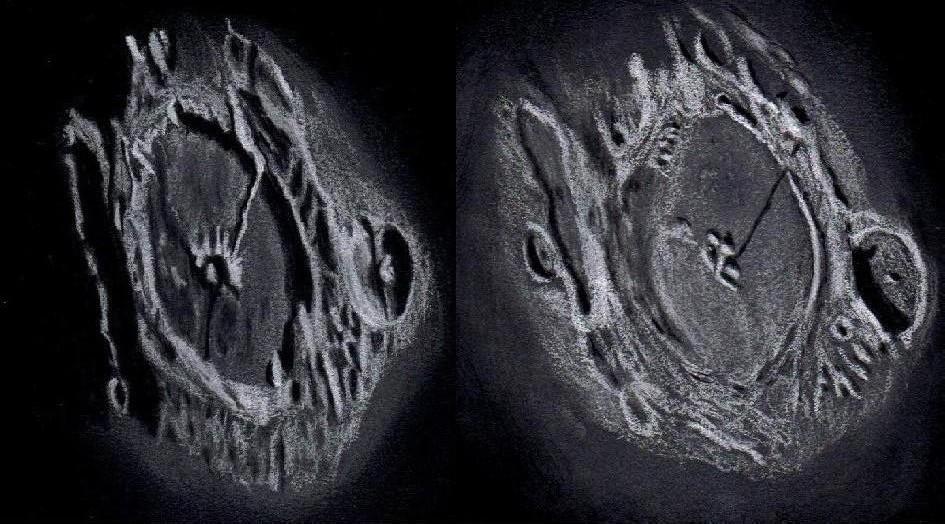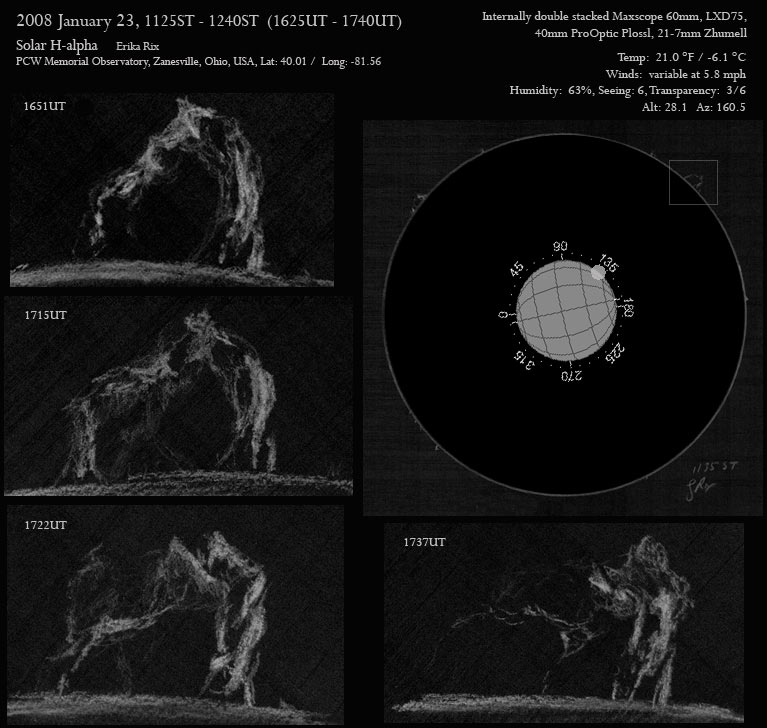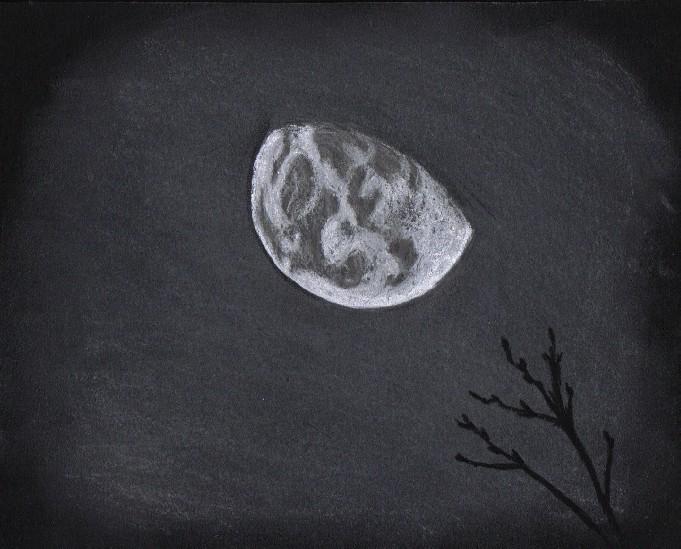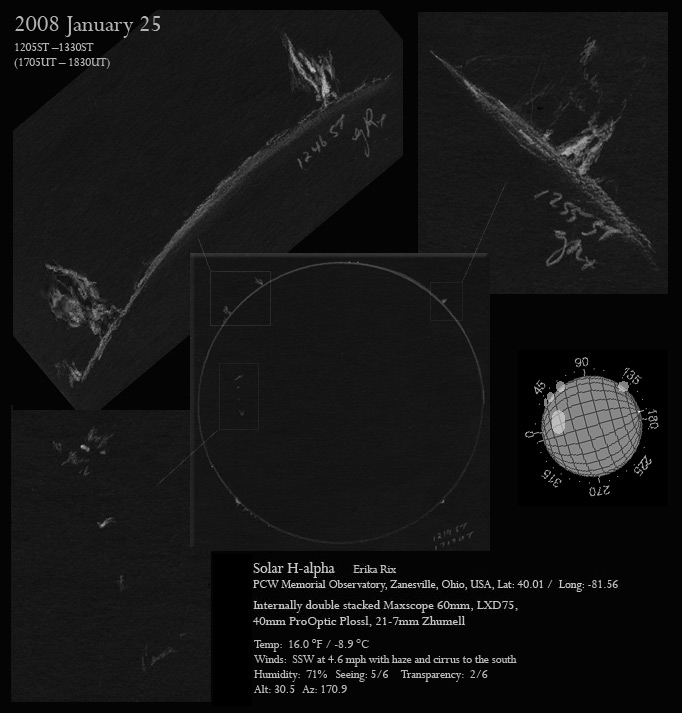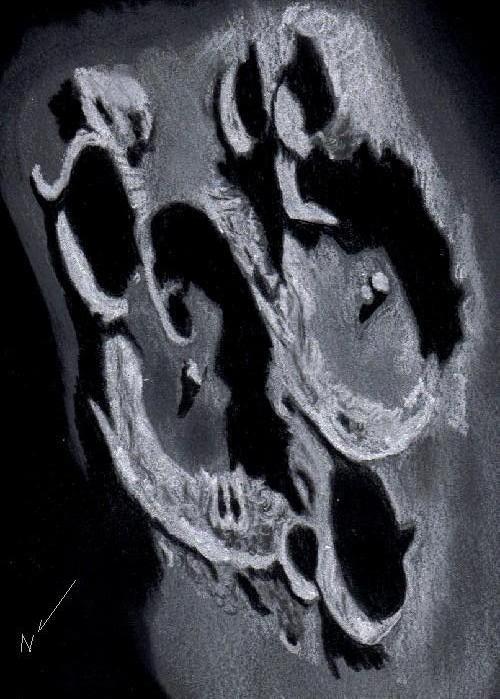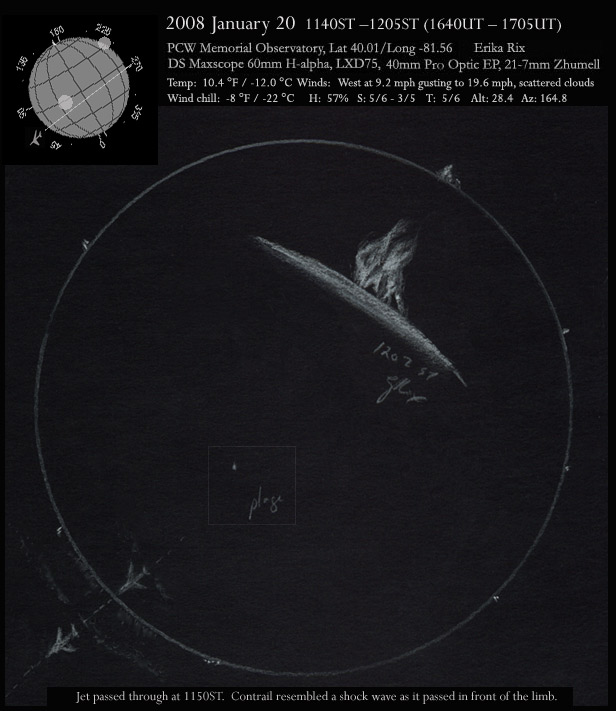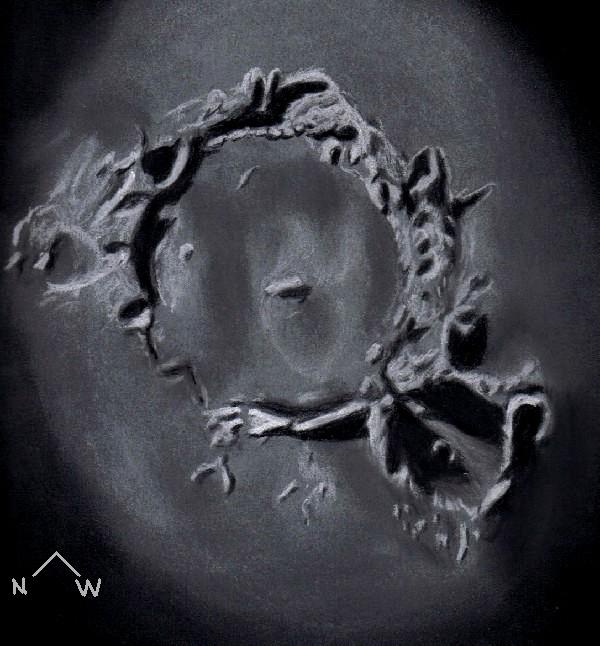
Northeastern Lunar Limb Crater: Endymion
By Frank McCabe
Northeastern Lunar Limb Crater: Endymion
The lunar libration on this evening was not favorable for viewing Mare
Humboldtianum. However the 125 kilometer diameter dark floored crater Endymion was
well placed in lunar morning sunlight just 300 km. southwestward of the mare
center. I was keen on rendering this crater because I knew it to be large, ancient
and in possession of a remarkable rim and rampart. Crater Endymion is an ancient
nearly four billion year old Nectarian formation. The highest reaches of the
mountains on the rim and apron tower at 4600 meters above the dark lava flooded
floor. I was unable to see under the viewing conditions the ray streaks from
crater Thales (not visible in the drawing) that are best seen at high sun. The
notable terracing on the inner rim was in shadow but much of the broken crater
ramparts were clearly visible about the crater’s circumference. Craters Atlas and
Hercules were visible nearby very close to the sunrise terminator and if the
temperature would have been a couple of dozen degrees warmer I would have enjoyed observing and sketching them.
Conditions at the time of this observation were less than ideal with a brisk wind
out of the northwest and an air temperature of -19° C (-2° F). I stretched this
sketch out over two hours plus so I could take frequent finger thawing breaks. I
have observed under much colder conditions but I need to take off my gloves to
sketch.
Sketching:
For this sketch I used: black Strathmore 400 Artagain paper, 9”x 12”, white and
black Conte’pastel pencils and a blending stump. Brightness was slightly decreased
(-4) and contrast increased (+2) after scanning using Microsoft Office Picture
Manager.
Telescope: 10 inch f/5.7 Dobsonian and 9mm eyepiece 161x
Date: 2-10/11-2008 23:15-2:20 UT (sketching time was 45min.)
Temperature: -19°C (-2°F)
clear, breezy
Seeing: poor back and forth between Antoniadi III and IV
Co longitude: 322.1°
Lunation: 3.8 days
Illumination: 17.2 %
Phase: 131.1°




